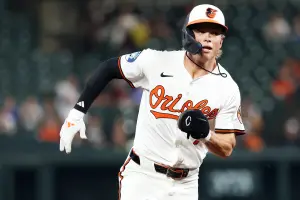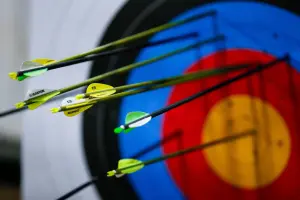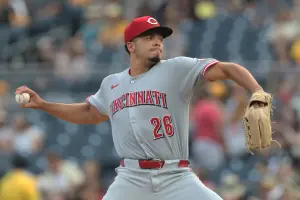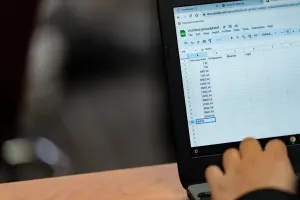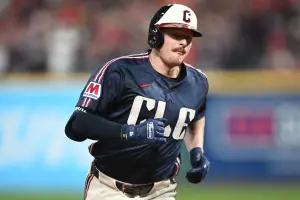
(*) ROTISSERIE: LABR plan, 2016
“Pitchers—can’t live with them; can’t live without them.” —Me, after a mediocre 2015 LABR season, after failing to defend my 2014 AL championship.
I have a love/hate relationship with pitchers, especially those of the starting ilk. In 2014, I loved them, with a core-four of Cory Kluber, Chris Archer, Drew Smyly, and Garret Richards all being rostered for between $7-13. In 2015, I hated them, as my stats were ravaged by Hisashi Iwakuma’s (-$20!) injury-plagued first half and Michael Pineda’s second half implosion.
The 2015 performance led me to commiserate with my Rotisserie therapist—“Why do I even bother?” Could I break free from my life-long dependence on starting pitchers? I mean, seriously…after reading Doug Dennis’ article on the Labadini Plan—I briefly toyed with a $9 pitching staff in 2016.
But that’s an extreme. Doug has won a couple of expert leagues, and a few close second-place finishes—with pitching staffs totaling about $30. I convinced myself to minimize my spending on pitchers in 2016 AL-LABR.
Unlock all of our insights on your way to a fantasy title! See what our season-long coverage offers and then subscribe to BaseballHQ.com.
Cheaper staffs in the year(s) of the pitcher
With the rise of the pitcher over the past few years, it’s become more important to pay for solid staff anchors. Or has it? To dominate the pitching categories, sure, paying the price for a Clayton Kershaw or David Price makes sense. But the goal in leagues without an overall prize (i.e., NFBC) is NOT to outscore hundreds of teams—it’s to garner enough points in pitching to win the league.
There’s another side effect of the offensive malaise in deep leagues: the makeup of the free agent pool. Think about the free agent pool in 12-team “only” leagues the past few years. Very few decent hitters come into the league, and when they do, there’s a FAAB frenzy to get them. There are, however, always a ton of excellent relievers, and often stud young starters. Good pitching appears on the waiver wire more often than good hitters.
Also, think about trading trends. Is there a big interest in starters? Rarely. Stud hitters rule the roost and create the most demand.
2016 AL-only LABR—The plan
Matt Dodge recently wrote an article describing draft strategies for various types of leagues. As a deep league with shallow free agent pool and little trading, LABR fits into a Spread-the-Risk (STR) strategy. Following Doug’s lead, I planned to load up on offense, compiling a $220 roster of 14 hitters costing $10-20 each. But to account for the lower pitching budget, I’d take a "mini-stars and scrubs” approach in pitching—three high-skills starters for a total of $25, a closer for $10 or less, and two starters/three relievers for $1 each.
Those $1 pitchers serve a purpose. I should be able to get three solid middle relievers for $1 each, and they will contribute to the ERA/WHIP/K bottom line. The $1 starters are purely lottery tickets; completely fungible. Hit it big, it’s a great profit center. In the more likely situation that they’re not very good—they’re the first overboard in FAAB bids.
Goals for my “expensive” ($7-10) starters are a Dom >= 7.3 K/9, Cmd >=2.8 K/BB, xERA < 3.50, hr/9 <=1.0. But this obviously won’t work with the $1 lottery ticket starters.
With 14 solid full-timers on offense, and some surplus in power or speed, I can hit the trade market to get some pitching help.
Reserves
LABR has some “old school” rules regarding the reserve (six players) list—they can be demoted/activated at will during the season. I planned to take six pitchers, and at least three starters. At this point, the only remaining starters will be high-risk. But since they can be stashed on the bench, so there’s minimal risk. This way, I can play advantageous matchups by streaming, with the $1 starters/relievers dropped when needed.
Potential pitfalls
After 10 years in AL-LABR, I know the trends. The hitting studs go above value (which creates bargains for lower-priced players), so it’s going to be tough to get $220 of value for my offense. But if the high end goes a few bucks above projected value, the $10-15 range will go at value or less. Whether that holds true will become obvious in the first few rounds of the auction.
And since none of the other owners have recently fallen off a turnip truck—they are all experts—my plan will quickly become obvious. This may make it harder to get the $7-10 starters are value, or to get the target $1 starters in the end game.
Another issue will involve my self-discipline. This strategy will not produce a projected first-place team coming out of the auction. While I always love looking at the RotoLab standings mid-auction to see that my team in first (using BHQ projections, of course), I will have work to do (trading and FAAB moves) to make the team a contender.
The team
Here’s how the team looks. $R represents the values in my RotoLab setup. Mayberry grades included as a reference.
Pos Name Team Sal $R Mayberry
=== =============== ==== === == ============
C Gomes, Yan CLE 15 11 4025 55 BCC
C Sanchez, Gary NYY 2 -1 4231 10 AFF
1B Teixeira, Mark NYY 15 19 4245 75 FDD
3B Uribe, Juan CLE 6 13 3235 65 CCB
CO Seager, Kyle SEA 25 23 3135 60 AAA
2B Lawrie, Brett CHW 17 14 3225 60 FCA
SS Desmond, Ian TEX 20 21 4425 75 AAB
MI Escobar, Alcides KC 13 15 0535 65 AAC
OF Gardner, Brett NYY 19 21 2525 70 CAA
OF Cabrera, Melky CHW 13 18 2245 65 CBD
OF Ellsbury, Jacoby NYY 18 20 1535 70 DAC
OF Aoki, Norichika SEA 12 15 1355 70 CBA
OF Gordon, Alex KC 16 15 3125 55 CBA
UT Ortiz, David BOS 18 21 4055 70 BAC
SP Kennedy, Ian KC 9 10 2303 30 BAA
SP Heaney, Andrew LAA 6 9 1105 40 ADA
SP Buchholz, Clay BOS 8 10 3203 33 FBB
SP Miley, Wade SEA 6 10 2205 55 AAA
SP Santana, Ervin MIN 7 9 2105 50 AAA
RP Smith, Carson BOS 3 1 5510 16 ADB
RP Bundy, Dylan BAL 1 -2 3301 10 FFF
RP Osuna, Roberto TOR 5 4 4411 14 ADF
RP Cishek, Steve SEA 6 9 3330 36 ABB
RES Skaggs, Tyler LAA 0 1 2201 7 FDB
RES Fulmer, Michael DET 0 -3 2200 0 AFF
RES Milone, Tommy MIN 0 5 1103 18 CCC
RES Cecil, Brett TOR 0 2 5510 16 BCA
RES Axford, John OAK 0 -1 3510 12 ACA
RES Nuno, Vidal SEA 0 -4 2201 7 AC
Mayberry breakdown:
Batting PX RSpd xBA PA MM
======= == ==== === == ===
Actual 38 34 43 66 865
Target 37 23 32 54 600
Pitching xERA K Sv IP MM
======== ==== == == == ===
Actual 25 24 5 23 284
Target 17 27 5 25 320
Results
How did it go? Despite the straight-forward strategy, I found it tricky to implement in the later stages of the auction. Down to two roster slots on offense—corner and catcher—I had too much money left to “only” purchase five $1 pitchers at the end. At this bargain part of the auction, the remaining corner slot was filled relatively cheaply. Left with only $1 catchers, and about $20, I had to spend a few bucks on two starters (Miley and Santana) and saves speculations (Smith and Osuna) to ensure I didn’t leave money on the table.
Offense—The Mayberry scores show that I successfully loaded up on hitting. Plenty of speed to trade, enough power, and a good BA. RotoLab shows the team with 55 points out a possible 60 in the projections.
However, there’s plenty of injury risk. Lenny Melnick of RotoExperts, doing the commentary on Sirius/XM, asked if I was purposely targeting old, injury-prone Yankees. No, not the plan! A result of the ebb-and-flow of the auction, I addressed needs and spent the allocated money for each position.
Starting Pitching—Totaling $51, I went over budget, and ended up with few $1 pitchers. While the staff rosters a decent xERA, it’s short on Ks, wins, and WHIP. As expected, there’s work to do here.
Relievers—Permit me to state unequivocally: I’m not a fan of Steve Cishek. But he was the only “designated closer” to go for my $9 budget or less. Getting into the middle of the pack in saves would be great.
Reserve rounds—Some young starters with upside, some older guys still looking to put it all together, and some saves speculations.
Overview
While this team didn’t come out the auction projected in first place, it’s well set up to compete for the title. There’s work to do: Besides trolling the waiver wire for pitching, I need to turn excess offense into starters who can boost wins and K totals. LABR labor begins now.


